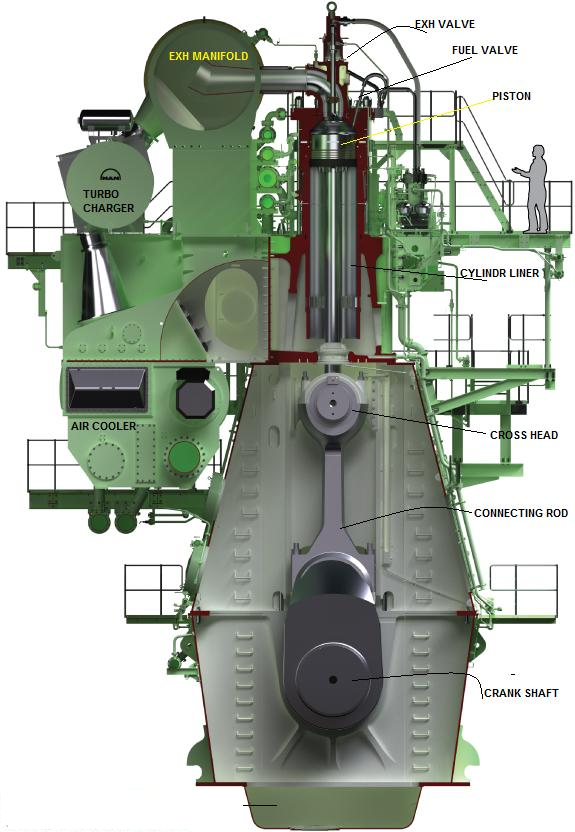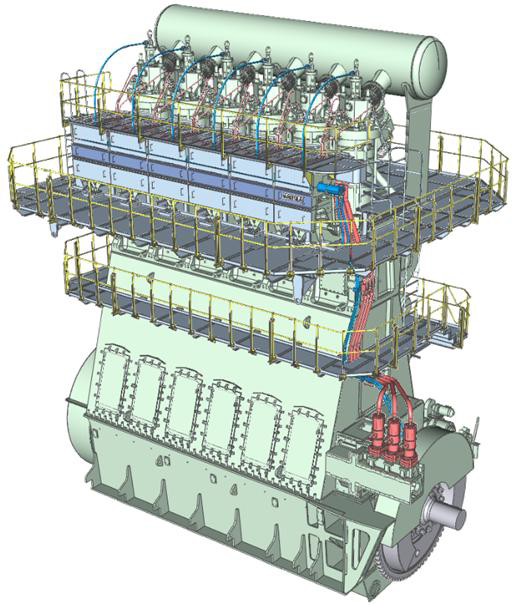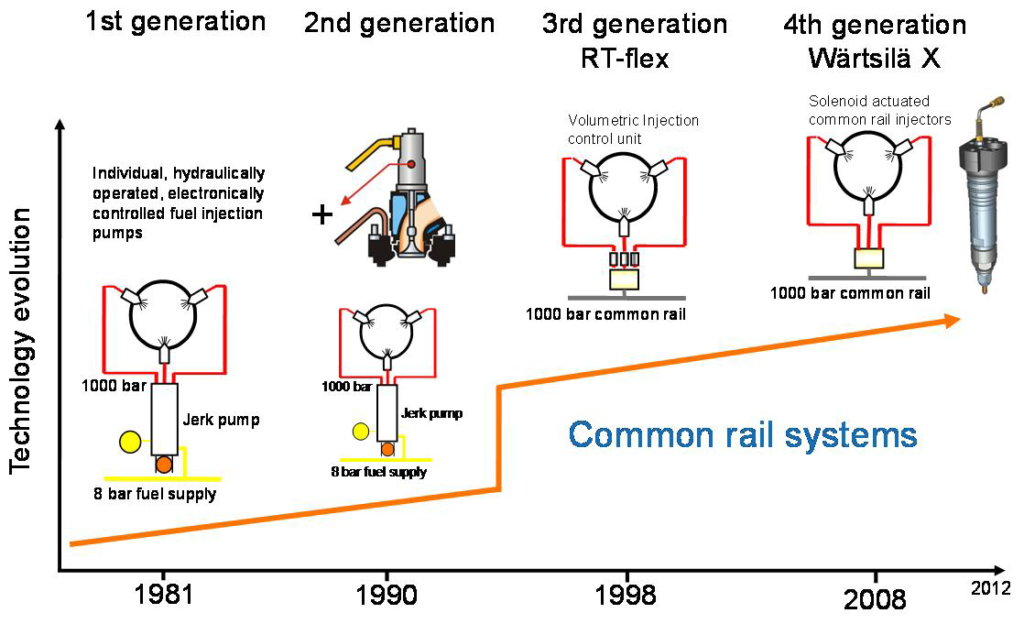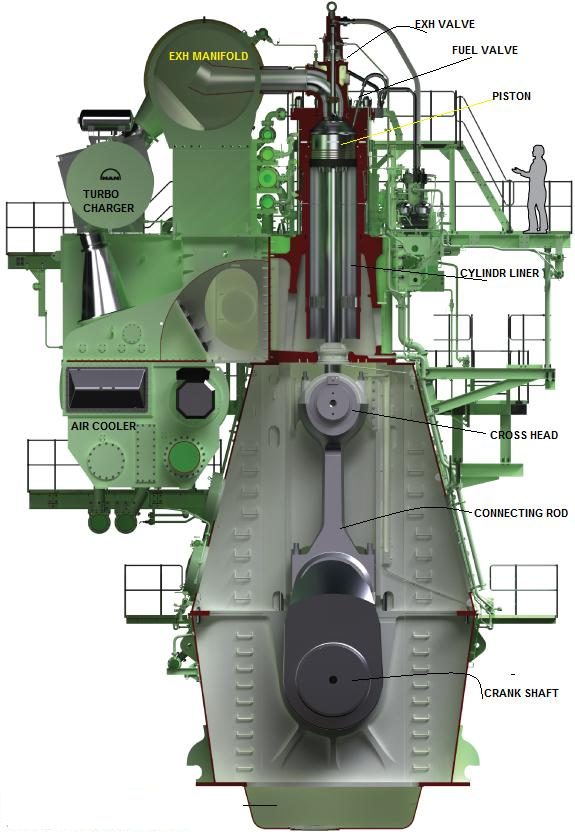
SYSTEM REQUIREMENTS
The fuel injection and exhaust valve actuation systems are core ancillary engine systems responsible for optimising the engine operation in variable conditions of load and speed. The major requirements for these systems on the modern two stroke marine engine are:
- Fully variable(timing & pressure), load independent fuel injection
- Accuracy (cylinder-to-cylinder, injector-to-injector)
- Very low, stable injection quantities
- Multi-fuel & multiple injection capability
- Fully variable, load independent valve actuation
- Serviceability, initial cost, maintenance cost

The above requirements present several important trade-offs that are balanced differently with different system architectures. The current changing market trends with very low fuel oil prices and very high uncertainty in the dominant future technologies for fuel consumption optimisation and emission abatement, make the flexibility & the multi-fuel capability of the systems key requirements for the future.
SYSTEM ARCHITECTURES
The available fuel injection system architectures for the engine designer range from pump-line-nozzle systems to advanced fully-flexible Common Rail (CR) systems. Since flexibility & fully variability in timing & injection pressure are key requirements, CR systems are the obvious single alternative for the modern two-stroke marine Diesel engines. WinGD (previously Wartsila Switzerland) has been developing CR systems since the late ‘90s, with the first engine equipped with an Injection Control Unit (ICU) in 2000. This system features an engine-driven high-pressure fuel pump unit, and an ICU located on the high pressure fuel rail feeding a spring-loaded injector on the cylinder cover.
Since then WinGD has been developing the next generation of CR systems based on the same HP fuel pump concept combined with a more advanced fuel-actuated CR injector, in order to bring the injection control near to the cylinder cover. By doing so, the volume of the high pressure fuel between the switching needle & the injector tip is minimised, enhancing the accuracy and multiple injection capability of the system, useful for BSFC/NOx optimisations and engine thermal management. An overview of the fuel injection system developments in the last 30 years can be seen below

Modern Wartsila engines feature also a compact, powerful and cost efficient exhaust valve actuation system (servo oil pumps, high pressure pipes, valves, exhaust valve control unit). With an operating pressure of 200-300bar supplied by engine-driven servo oil pumps, this common rail system offers the designer full flexibility in exhaust valve timing, giving the possibility to offer several different tunings for customised applications.
SYSTEM DEVELOPMENT PROCESS
Fuel injection & exhaust valve actuation system development is typically highly validation-intensive with rigorous component & system rig testing & field testing before the validated parts can enter serial production. The main development steps are outlined below:
- Concept and architecture decisions are made with the basic inputs such as power, speed, injection and valve timing, cylinder pressure, valve diameter and opening time and system flexibility
- First designs of the supply unit, rail unit, injection & valve drive are made considering geometrical considerations given from powertrains, structure, hot parts, etc
- Hydraulic & stress calculations are used to check the first designs
- Component & sub-system validation(functionality, endurance) on rigs & field engines for several thousand hours. Iterations of the design are made as needed
- Multi-disciplinary design reviews with the hot parts, scavenge system & design finalisation
- Testing on prototype engine & final optimisation of system & component design




